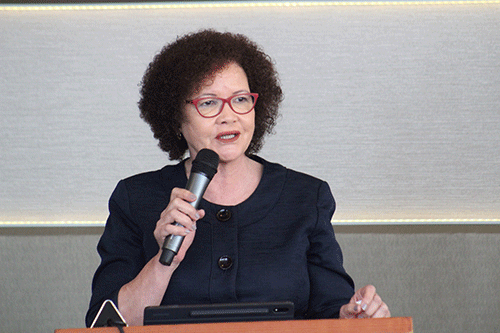Although Namibia continues to be one of the biggest contributors to the high burden of tuberculosis on the continent, which causes concern, the Global Fund says 50 million lives were saved over the past 20 years around the world.
Deputy executive director in the health ministry, Petronella Masabane said TB is still a concerning cause of mortality, with almost half of the deaths in Namibia being attributed to TB/HIV co-infection.
“Some of these could have been prevented if those affected were at least initiated on a course of TB preventive therapy. This as a major setback as we now have to catch-up and find those missing cases, estimated to be 44% in Namibia,” she stated.
Masabane was speaking at the end term review of the third national strategic plan for tuberculosis and leprosy 2017/18-2021/22 in Windhoek recently.
World Health Organisation (WHO) indicates that Namibia still ranks amongst the top 30 countries with the highest TB and HIV burden globally. A TB programme review assesses the performance of the strategies implemented to fight TB and identifies the strengths and weaknesses of interventions that have been put in place and guide to strategic recommendations to address the gaps identified.
Masabane said: “The review will also look at the level of financing and other health system inputs, including human resources, for TB and leprosy services; evaluate the structure, organisation and management frameworks for TB policy and the development of the programme within the healthcare system in order to achieve the high-level commitments.”
The chief clinical mentor for the TB programme Nunurai Rwusa added that men (aged over 15 years) are disproportionally affected by TB (57%) compared to women in the same age range (33%).
He said: “TB among children aged 0-14 years represent 10% of all notified TB cases which could be due to under-diagnosis and underreporting. From an epidemiological perspective, in a high TB burden country such as Namibia, child TB cases should make out 10-20% of total cases.”
The WHO said in Namibia, HIV prevalence dropped from 22% in 2002 to 17.2% in 2016. Data show that the HIV prevalence is decreasing in younger age groups (15–19 and 20–24), while prevalence in the older age groups appears to be increasing. At the end of June 2016, 149,829 adults and 9,666 children were receiving ART, representing 79% coverage of people eligible for treatment. This high coverage is among the highest in the African region and does not include patients being treated in the private sector.
Funding
Peter Sands, the executive director of the Global Fund yesterday said the goal is to raise US$18 billion (over N$311 billion) next week at the Replenishment Conference in New York, and save another 20 million lives over 2024-2026.
The fund, which brings together governments, multi-lateral agencies, bilateral partners, civil society groups, people affected by the diseases and the private sector, estimates that financing would help cut HIV, TB and malaria deaths by nearly two-thirds and save 20 million lives. Sands stressed: “Since March 2020, the Global Fund had invested more than $4.4 billion to fight the pandemic and mitigate its impact. Although most countries that fight HIV, TB and malaria have started to recover from the ravages of Covid-19, we need to accelerate our efforts if we are to fully recover lost ground and get back on track towards ending these diseases by 2030.”


